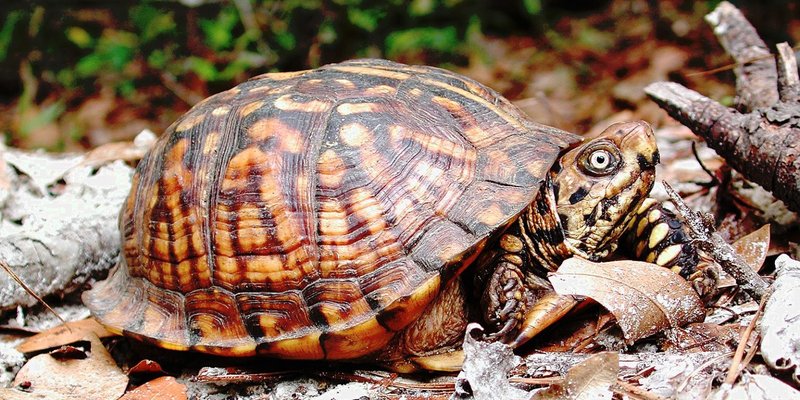
Box turtles are unique not just because of their adorable, domed shells but also due to the evolutionary path that led them to be what they are today. It’s a remarkable story of resilience and change. So, grab a cup of coffee, and let’s dive into the evolutionary history of the box turtle and explore how it has survived through the ages.
What is a Box Turtle?
Before we get into their evolutionary history, let’s clarify what a box turtle actually is. Box turtles belong to the family Emydidae, which includes a variety of turtles found predominantly in North America. Their distinguishing feature is their unique shell design, which can completely close, protecting them from predators. It’s like carrying a portable home!
There are several species of box turtles, with the Eastern Box Turtle being one of the most well-known. They generally have a high, dome-shaped shell that can vary in color from brown to yellow, often featuring vibrant markings. These turtles tend to be quite terrestrial, unlike some other turtle species that prefer aquatic environments.
You might be wondering why these turtles are so interesting from an evolutionary perspective. Well, their adaptability to different habitats showcases how resilient these creatures really are!
The Origins of Box Turtles
Box turtles have been around for quite a while, tracing their ancestry back to the late Jurassic period—around 150 million years ago. That’s right! They’re practically living dinosaurs. The earliest ancestors of modern turtles first appeared during this time, but the box turtle itself began to emerge later, developing its unique characteristics.
During the Cretaceous period, around 65 million years ago, a diverse range of turtles flourished. The warm, humid climates allowed them to thrive, leading to the emergence of various species. Over time, box turtles began adapting to terrestrial environments, developing stronger limbs and domed shells for protection.
It’s interesting to think about how these turtles have seen their world transform dramatically. From massive dinosaur reptiles roaming the Earth to the rise of mammals, box turtles have weathered many storms—literally and metaphorically!
Adaptive Features of Box Turtles
Box turtles are not just cute; they are marvels of evolution. Their ability to retract into their shells for protection is their most notable feature. This adaptation is a key survival strategy against predators, giving them an edge in the wild. Think of it like having a built-in security system!
Their diet also shows incredible adaptability. Box turtles are opportunistic feeders, munching on a variety of food ranging from fruits and vegetables to insects and small animals. This flexibility in diet helps them thrive in varying environments. If food is scarce in one area, they can easily switch to another source.
Another fascinating aspect is their slow metabolism. Box turtles can survive in low food conditions by conserving energy. This ability has allowed them to endure harsh winters and periods of drought, proving that patience truly is a virtue in the animal kingdom.
Box Turtles in Today’s World
Today, box turtles are found throughout North America, from the lush woodlands of the East to the arid deserts of the West. However, their numbers are decreasing due to habitat destruction and human activity. Urban development and road construction can be especially dangerous for these little creatures.
As land is cleared for farming or cities, box turtles find their homes rapidly disappearing. It’s sad to think about how these ancient beings are facing threats from the modern world. Conservation efforts are essential to protect their natural habitats and ensure their survival.
If you see a box turtle crossing the road, why not stop to help? You can gently guide it to safety. Every little action counts in protecting these incredible creatures and their legacy.
The Role of Box Turtles in Ecosystems
Box turtles are essential members of their ecosystems. As omnivores, they contribute to nutrient cycling. By eating plants and insects, they help control populations and spread seeds, promoting healthy plant growth. Imagine them as tiny gardeners working diligently in their habitats!
Their presence also indicates ecosystem health. A decline in box turtle populations can signal environmental issues, such as habitat degradation or pollution. Ongoing studies are crucial to understand better how these turtles interact with their environments and what that means for overall ecosystem health.
It’s eye-opening to think about the interconnectedness of life. Every creature, no matter how small, plays a role in maintaining the balance of nature.
Future of Box Turtles
As we look to the future, conserving box turtles is more important than ever. Organizations and enthusiasts are working hard to create awareness around their needs and threats. From habitat restoration to awareness campaigns, positive change is on the horizon.
You might also come across programs aimed at breeding box turtles in captivity to help boost wild populations. These efforts serve not only to maintain genetic diversity but also to educate the public about the importance of these charming creatures.
The journey of the box turtle continues. The story of its evolution is still being written, and it’s up to us to ensure that these remarkable creatures have a future. By understanding their past, we can help shape a better tomorrow for them.
In conclusion, the evolutionary history of the box turtle is a testament to resilience and adaptability. They’ve thrived for millions of years, adapting to changes in their environment while playing a vital role in their ecosystems. As we enjoy observing these creatures in nature, let’s also be proactive in ensuring their survival for generations to come.
